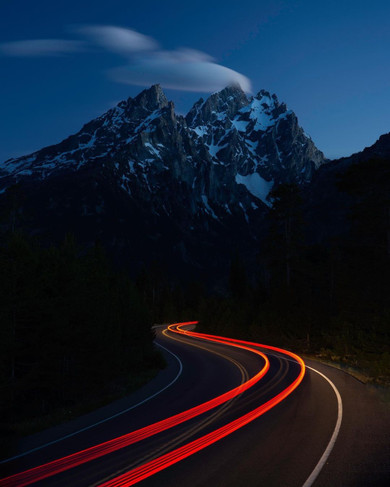Why Leonardo da Vinci is Your Secret Weapon for Better Landscape Photos
- Ryan Oswald
- Mar 23
- 3 min read
Yes, that Leonardo da Vinci. I get it—you're a photographer, not an art historian. Maybe you're even thinking, "Why should I care about some painter who's been dead for over 500 years? I'm here to take better pictures, not discuss art history."
Fair point. But da Vinci wasn't just an artist. He was a master of composition, light, shadow, and perspective—skills every photographer desperately needs. And when it comes to landscape photography, stealing a page from da Vinci’s playbook is like having a secret weapon. Stick with me for just a few minutes, and I promise it'll change how you see your next shot.
The Power of "Visual Pathways"
Leonardo da Vinci mastered a concept we now call visual pathways—those little "roads" that guide a viewer’s eye effortlessly through an artwork. In photography, visual pathways are equally powerful.
Think of a winding river, a path through the woods, or the curve of a mountain ridge. These elements draw eyes through your image naturally, guiding viewers deeper into the scene. Da Vinci did this with careful strokes of paint; you'll do it with thoughtful framing.

Use visual elements like winding trails or rivers as visual pathways to effortlessly lead viewers through your photos.
The Magic of "Chiaroscuro": Making Your Photos Pop
Da Vinci pioneered a technique called "chiaroscuro", which basically means strong contrasts between dark and light. Imagine your landscape shots with rich, dark shadows and vibrant highlights. Instantly, your photos have drama and depth.
Ever shot a mountain at sunrise and felt something was missing? Try composing the scene to accentuate contrasts—deep shadows in valleys contrasting with golden peaks kissed by the morning sun. Da Vinci knew this contrast would evoke emotion, and you can harness this to make your landscapes leap off the screen.
By simply brightening the highlights and darkening the shadows, our image is dramatically improved. This is by far the one editing technique that makes the biggest difference.
Using "Sfumato": Softening Your Edges (and Your Skepticism)
Stay with me; I promise this isn't getting overly technical! Da Vinci's "sfumato" technique—essentially "softening"—involved gently blending colors and tones. Think of mist rolling over a hillside at dawn or a foggy forest at dusk. That subtle softness creates depth and mystery.
When photographing landscapes, subtle transitions between your subjects and their backgrounds can be incredibly appealing. Think fog rolling through trees or a mountain range slowly fading into the horizon. Embracing a bit of sfumato can make your photographs feel dreamy and compelling.

Perspective: It's Everything
Da Vinci's sketches weren't just beautiful—they were scientifically accurate. His study of perspective taught him to create depth, guiding the viewer's eyes precisely where he wanted.
When photographing landscapes, perspective matters. Get low to accentuate foreground elements. Frame scenes so mountains appear grand and expansive. Perspective isn't just about lenses—it's about positioning yourself in relation to the scene. Even skeptics can't deny the impact this small shift can make.

Not only does the wide angle lens stretch the perspective, by choosing to just have the foreground in focus completely shifts the perspective, as well.
Narrative Storytelling—Mini Stories Within Your Frame
Here's something brilliant Da Vinci did that you can directly apply to your photography: storytelling through careful composition. Take his famous The Last Supper. At first glance, it's a single dramatic moment, but look closer, and you notice each group of apostles reacting differently—whispering, questioning, or showing disbelief. Each small cluster adds emotional depth to the overall story.

You can do the same with your landscapes. Instead of just capturing a beautiful scene, look for small stories within it—a lone tree standing defiantly on a windswept hillside, wildlife interacting naturally, or subtle evidence of human presence blending with nature. These mini-stories elevate your photograph, transforming it from simply beautiful to truly memorable.
These are some of my personal favorite stories I've told through prohotography, but every image of mine starts with this mindset. What's the story I'm trying to tell? Who's the hero?
Less Skepticism, More Creativity
You don't need a degree in art history to appreciate how these principles can enhance your photography. Da Vinci simply understood visual storytelling. And that's exactly what powerful photography is about—guiding your viewer’s eye, evoking emotions, and telling a compelling story through images.
So, next time you're out shooting, pause for just a second and think: What would Leonardo do? You might just find your best photo yet.
---
Try these simple techniques on your next photography outing, and share your results. Did they make your images stronger, or are you still skeptical? I'd love to hear your thoughts below!










